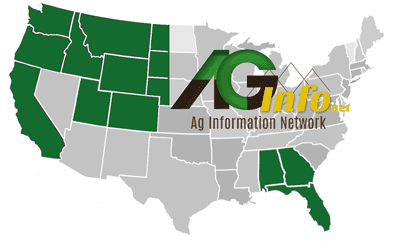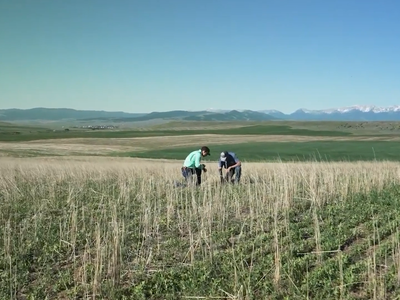Japanese beetle eradication
The Idaho State Department of Agriculture is again conducting a full-court press against the Japanese beetle, an invasive pest that attacks a wide variety of crops.The beetle is a highly destructive plant pest that feeds on more than 300 different agricultural and ornamental plants.
Agriculture is a major part of Idaho’s economy, and, according to a recent University of Idaho study, accounts for one in every nine jobs in the state, 17% of total sales and 13% of total gross state product.
The Japanese beetle threatens to take a bite out of that economic impact if it ever gains a significant foothold in Idaho.
The ISDA is currently conducting a major eradication effort of the beetle in the Caldwell area. If left unchecked, the pest could cause large negative impacts to many Idaho ag commodities that are grown around that area.
Canyon County has the most farms in the state – 2,113 – and ranks No. 5 in total farm revenue among Idaho’s 44 counties.
The county is also one of the top seed producing areas in the world and the center of Idaho’s $500 million seed industry.
The bad news is that the pest has been found adjacent to farmland in Caldwell. The good news is that so far, the ISDA’s eradication effort appears to be working.
And the ag department does have a good track record when it comes to eradicating this plant pest.\
After dozens of Japanese beetles were detected in Boise in 2012, the ISDA undertook a major eradication effort that resulted in the pest not being detected in Boise the past several years.
It was the largest documented Japanese beetle eradication in U.S. history, according to Andrea Thompson, section manager of ISDA’s plant industries division.
The ag department first identified the Caldwell infestation in 2021.
After feeding on grass in residential areas during the winter months, the beetle comes out and it “wants to eat everything else and that’s where it becomes a problem for agricultural production,” Thompson said.
The department treated about 1,065 properties on 310 acres of turf in 2023 and this year plans to increase the amount of treatments.
Adult Japanese beetles are about a half-inch long and have metallic green bodies and coppery wing covers.
Adult beetles can leave holes in plants and skeletonize leaves.
The number of beetles detected in the Boise infestation exploded from 56 in year one to more than 3,000 in year two.
So far, ag department officials have not detected those types of numbers in Caldwell.
“We haven't seen that rate of explosion in Caldwell, so we feel like the treatment is working and that eradication is within reach,” Thompson said. “We feel very confident in our ability to knock this thing out.”
She said the ISDA takes this eradication effort extremely seriously and wants to keep the pest from becoming a major issue for Idaho farmers.
If the pest did gain a foothold in Idaho, it could impact farmers’ ability to export commodities and quarantine restrictions could be placed on the movement of some Idaho crops.
Thompson said the state’s agricultural industry has been very supportive of the eradication effort, and residents of Caldwell have also been very helpful.
The beetle, native to Japan, was first detected in the U.S. in 1916 and is now found in most states east of the Mississippi River.
Idaho does have preventative controls designed to stop the introduction of Japanese beetles into Idaho from infested states in the East.
Thompson said that in other areas of the country where the beetle is found in high numbers, growers’ only option is weekly chemical treatments during the growing season to minimize damage.
Mike Williamson, manager of Williamson Orchards and Vineyards in Caldwell, said he applauds the ag department’s effort to get rid of the beetle before it establishes itself here.
He said any invasive species is a concern “because there are no natural predators or natural control methods to get them under control.”
“These invasive species increase our costs as growers … so it’s better to stop it ahead of time,” he said.
ISDA officials suspect the invasive pest hitchhikes to Idaho, mainly on nursery stock brought in by newcomers moving to the state.
Rules are in place to try to prevent that from happening but they still pop up in Idaho from time to time.
Idaho has been trapping for the beetles since 1991.
For more information about the pest, contact Thompson at (208) 332-8620 or by email at Andrea.Thompson@isda.idaho.gov













